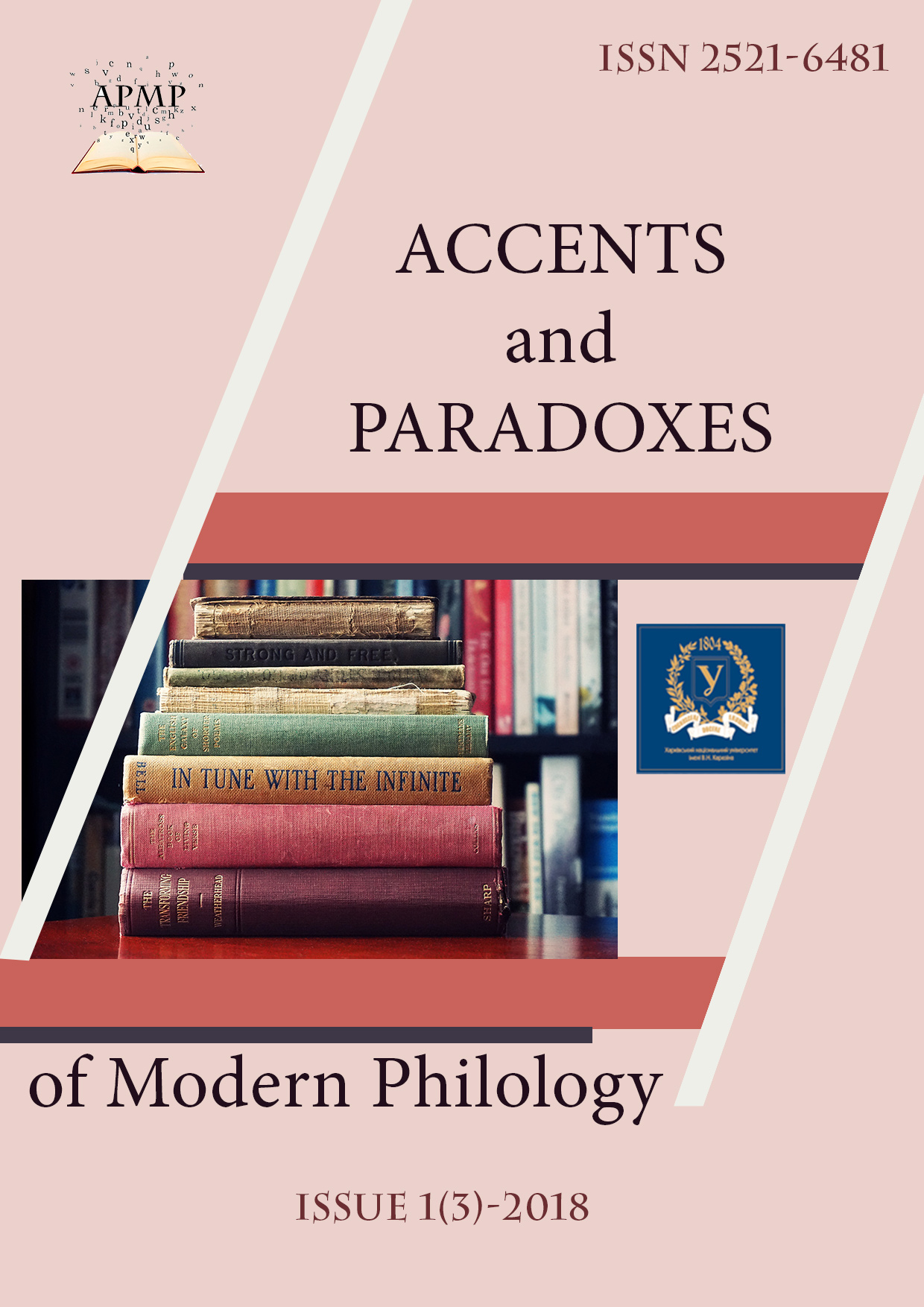Pragmatic and stylistic aspects of expressing tolerance in modern American short stories
Abstract
In the article, the aspects and types of such stylistic device as foregrounding are investigated in the short stories of contemporary American writers. The quantitative aspect of foregrounding prevails in flash fiction stories which is realized by means of stylistic convergence and parallelism. Convergences are mainly used in strong positions, especially in the endings, as in the stories by J. Updike, D. Galef, D.Eggers. The qualitative aspect of foregrounding is expressed with the help of tropes such as metaphor, simile and oxymoron which are also present in strong positions – titles, beginnings, endings (the stories by G. Paley, D. Galef, J. Updike). The idea of tolerance, sympathy, understanding is dominant in many flash fiction stories. Foregrounding, especially in the strong positions of the stories, emphasizes this idea, thus producing a strong pragmatic, emotional effect. Due to such device in the endings many flash fiction stories can be called modern parables of life, love, justice.
Downloads
References
Арнольд, И. В. (2004). Стилистика. Современный английский язык. М.: Флинта: Наука.
Busse, B. and McIntyre, D. (2010). Language, Literature and Stylistics. In: Language and Style. In Honour of Mick Short. London: Palgrave Macmillan.
Doughwaite, J. (2000). Towards a Linguistic Theory of Foregrounding. Alessandria: Edizion’ dell’Orso.
Leech, G and Short, M. (2007). Style in Fiction. A Linguistic Introduction to English Fictional Prose. London: Pearson Education.
Short, M. (1996). Exploring the Language of Poems, Plays and Prose. London: Longman.
Yemets, A. (2017). The role of stylistic convergence in the contemporary American fiction. Modern Science / Moderni Veda, 7, pp. 102-108.




